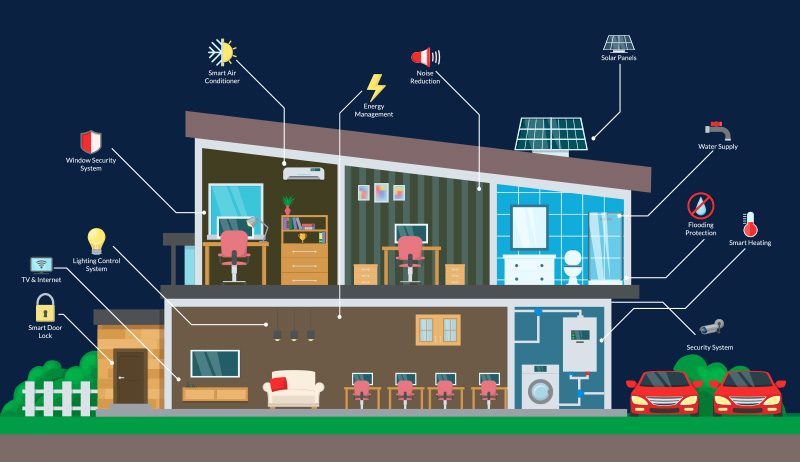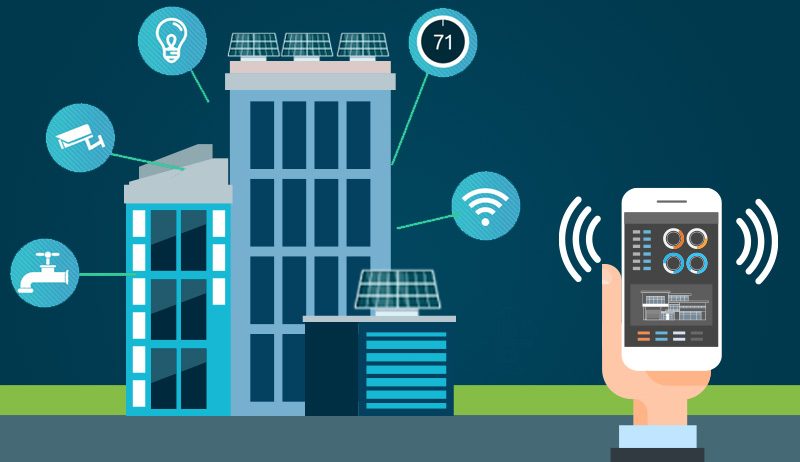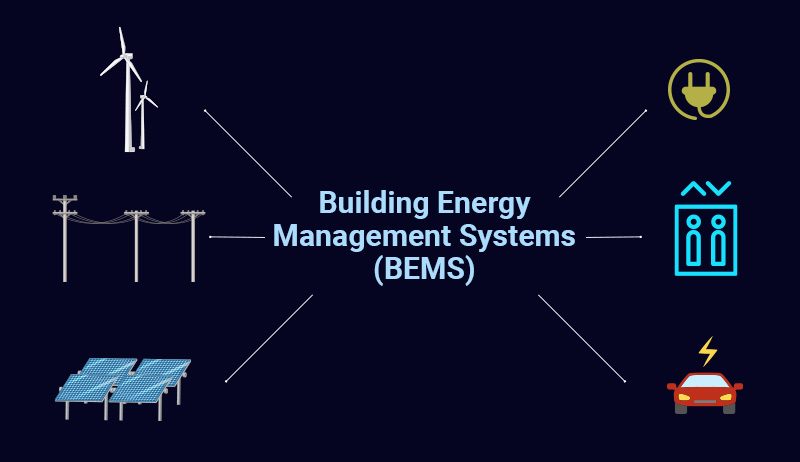Energy management is essential in today’s business buildings. Energy and utility costs account for about 40% of the money needed to run an office building.
Energy costs keep going up, and people care more about being green. That’s why it’s crucial to use energy wisely.
Building Energy Management Systems (BEMS) is leading the way towards energy efficiency. They offer smart solutions to manage energy use well.
BEMS helps cut down on energy use and costs. They also make buildings work better overall.
In a time when saving energy and being eco-friendly are super important, managing how much energy buildings use is a big deal. Building Energy Management Systems (BEMS) is the answer.
They’re smart systems that let building owners and managers monitor, control, and improve energy use.
This saves a lot of money and helps the environment. This blog will discuss BEMS, why they’re good, and how they make the world greener.
What is a Building Energy Management System (BEMS)?
A Building Energy Management System (BEMS) is a fancy system designed to monitor, control, and manage a building’s energy use.
Instead of doing things old-fashioned, a BEMS integrates different building parts into one system, such as heating, cooling, LED lights, and power. This makes managing the building’s energy use easier across various locations.
In a time when energy costs keep going up, and people care more about the environment, BEMS are essential.
They help businesses save a lot of money on running their buildings and help the environment by using less energy and producing less pollution.
Monitoring and improving how much power is used makes buildings work better and saves money.
Building Management Systems Becomes Smart Building Management Systems: Brief History of BEMS
Building energy management systems, like intelligent systems for managing how much energy buildings use, are new. Many eco-friendly buildings use BEMS, heat pumps, and other new tech to reduce pollution.
In Australia, the greenest buildings today use 38% less energy per square foot and are mainly powered by electricity. Let’s look back at how BEMS came to be and how it changed how commercial buildings work.
Integration and Convergence:
Buildings became more complicated in the 1980s and 1990s. People needed a way to manage all the different parts, like lighting, heating, and security, in one place.
That’s when Building Management Systems (BMS) came along. They combined all these parts into one system, making things easier to control. This was just the start of what would become today’s advanced BEMS.
Digital and Technological Advancement with Data Usage:
By the late 1990s and early 2000s, technology was changing fast. Sensors and the internet became widespread.
This allowed Energy Management Systems (EMS) to use real-time data to keep track of things. It made monitoring more accurate, improved efficiency, and let people predict when maintenance was needed.

Going Green and Sustainability:
Getting Smart with IoT:
AI Usage:
Today, the best BEMS use artificial intelligence (AI) and machine learning. They don’t just react to what’s happening now; they predict what will happen next.
By looking at past data, weather, and the number of people in the building, they can plan to save energy and work more efficiently.
From simple control systems in the past to today’s high-tech, predictive BEMS, these systems have changed a lot with technology and what society cares about, especially when it comes to being eco-friendly and making buildings more smart.
Essential Features to Look for in a BEMS
When considering a Building Energy Management System (BEMS), it is crucial to ensure it has the right features for your building’s goals and tech setup.
Here are the main things you should look for:
Problem Detection and Diagnosis:
Integration with Different Systems:
Monitoring Capability in Real Time:
User Friendly Usage Systems :
Physical Components of BEMS

Sensors and Meters: BEMS uses sensors and meters to get info like temperature, humidity, light levels, how many people are around, and how much energy is being used, all in real time.
Controllers: This system uses controllers to control and automate different parts of the building based on the info it gets. For example, it might adjust the air conditioning, turn lights on and off, or manage electricity use during busy times.
Communication Networks: BEMS requires communication networks to send info between sensors, controllers, and the leading management software. These networks can be wired (like with cables) or wireless, depending on how the building is set up.
Main Management Software: This is like the brain of the BEMS. It analyses the sensor information and decides how to use energy best and keep the building comfortable.
User Interface: People who manage the building use this to interact with the BEMS. It could be a website, a phone app, or computer software. These interfaces show what’s happening in real-time and let users control things even if they’re not in the building.
Main Benefits of Using a Building Energy Management System
Using a Building Energy Management System (BEMS) has significant advantages, especially heating, ventilation, and air conditioning (HVAC) systems, which use up to 40% of a building’s energy.
Experts say about a third of this energy is wasted because of problems like breakdowns, not working as well as they should, or controls not set up right.
Here are the main benefits of having a BEMS:
Saving Energy and Money:
Making Buildings More Functional:
BEMS keep things right in buildings, making them more comfy and helping people work better. They automatically adjust based on how many people are around and how the building is being used.
They can predict when things might go wrong so repairs can be made before a major issue occurs.
Diagnosing and Fixing Problems:
Usually, people walk around buildings checking for issues, but they might only catch some things.
A good BEMS can accurately find issues and determine what’s causing them. It also gives suggestions on how to fix things, making repairs faster and easier.
Environment Friendly:
Following Rules and Standards:
BEMS ensures that buildings meet energy saving rules and track energy use. It is essential to follow different standards.
Building owners can save energy, improve their buildings, help the environment, and follow the rules by using a BEMS.
Plus, they’re great at finding issues early, making building management easier. They can also show how well a building’s energy use compares to others.
The Future of Building Energy Management Systems

Building Energy Management Systems (BEMS) is changing fast, with new trends and tech making a significant impact on what’s to come:
Using More Renewable Energy: In the future, BEMS will work more with renewable energy sources like solar and wind power, making buildings greener.
Better Data Analysis: With improved sensors and connecting more devices, BEMS will give us even more info about how buildings use energy and how to save more.
Predicting Problems: Thanks to AI and intelligent learning, BEMS will get better at figuring out when things might go wrong and fixing them before they do.
Preferences: People who use buildings will expect them to use less energy and be more eco-friendly. Many people consider energy-saving features necessary when choosing a place to be.
In short, Building Energy Management Systems have gone from simple to super smart, using AI to save energy and improve building performance.
They help cut costs, make buildings perform well, and follow the rules. As technology improves, BEMS will become even more critical for managing energy and keeping buildings eco-friendly and efficient.
We suggest building managers think about getting or upgrading their BEMS. It’s good for now and prepares buildings for the future.
Contact Cyanergy for more energy-efficient products!







